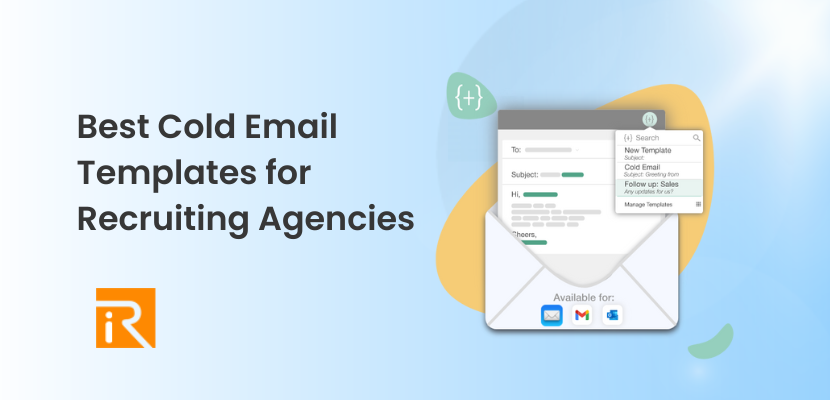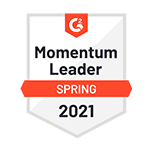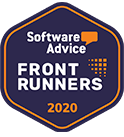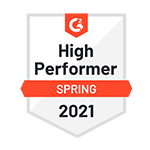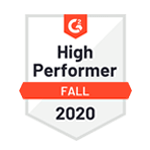Recruiting top talent can be a daunting task for any agency. With so many candidates vying for the same positions, it can be difficult to stand out from the crowd. One effective strategy for reaching out to potential candidates is through cold email outreach. However, crafting an effective cold email can be a challenge. That’s why we’ve compiled a list of the best cold email templates for recruiting agencies. These templates will help you craft compelling emails that will grab the attention of top talent and encourage them to consider your agency.
The Benefits of Cold Email Outreach for Recruiting Agencies
Cold email outreach has become an increasingly popular tool for recruiting agencies to identify and engage potential candidates. By crafting personalized messages, recruiters can expand their reach and increase response rates. In this article, we will discuss the benefits of cold email outreach for recruiting agencies.
Firstly, cold email outreach allows recruiting agencies to expand their reach beyond their immediate network. Rather than relying solely on referrals or applications, recruiters can proactively seek out candidates who may not have considered the position otherwise. By targeting individuals with specific skillsets or backgrounds, recruiters can identify potential candidates who may be a great fit for the role.
In addition, cold email outreach allows for a more personalized approach. By taking the time to research a candidate’s background and experience, recruiters can tailor their message to the individual, making it more likely that the candidate will engage with the email. Personalization can also help to differentiate the recruiter’s message from other generic emails that a candidate may receive.
To increase the likelihood of a response, recruiters can also use various techniques to increase response rates. One such technique is to keep the email short and to the point. Candidates are often inundated with emails, and a lengthy message can quickly turn them off. Instead, recruiters should focus on highlighting the key aspects of the position and why the candidate would be a good fit.
Another technique is to use transition words to guide the reader through the email. These words can help to connect ideas and create a flow that makes the email easier to read. For example, words like “however,” “nevertheless,” and “in addition” can help to organize the message and make it more coherent.
Finally, recruiters can increase response rates by including a call to action at the end of the email. This call to action can encourage the candidate to respond or take action, such as visiting the company’s website or scheduling a phone call. By providing a clear next step, recruiters can make it easier for candidates to engage with the email and move the recruitment process forward.
How to Write an Effective Cold Email
Firstly, it’s important to determine your target audience. Who do you want to reach out to, and why? Understanding your audience can help you craft a message that resonates with them and speaks to their needs or interests.
Next, crafting a compelling subject line is crucial. This is often the first thing the recipient will see, so it’s important to make it attention-grabbing and informative. A good subject line should be clear, concise, and relevant to the recipient’s interests or needs.
Once you’ve grabbed the recipient’s attention with the subject line, it’s important to keep your email short and sweet. People are busy, and long emails can be overwhelming. Try to keep your message concise and to the point, focusing on the most important information.
In addition, make sure to include a call to action in your email. This is the action you want the recipient to take, whether it’s scheduling a meeting, visiting your website, or responding to your email. A clear and specific call to action can increase the chances of the recipient responding to your email.
Lastly, make sure to proofread and edit your email before sending it. Typos and grammatical errors can make your email look unprofessional and decrease the chances of a response.
To write an effective cold email, you should determine your target audience, craft a compelling subject line, keep your email short and sweet, include a call to action, and proofread and edit before sending. By following these tips, you can increase the chances of a response and ultimately achieve your goals for reaching out.
Best Cold Email Templates for Recruiting Agencies
Cold emailing can be an effective tool for recruiting agencies to identify and engage potential candidates. However, crafting the right message can be challenging. In this article, we will discuss some of the best cold email templates for recruiting agencies.
- The “Value Proposition” Template: This template focuses on highlighting the value that the position or company can offer to the candidate. It starts with a strong opening statement that captures the reader’s attention, followed by a brief introduction of the company and the role. Then, it goes on to highlight the specific benefits and opportunities the candidate can expect from the position or company.
- The “Introductions” Template: This template is ideal for recruiters looking to introduce themselves and start building a relationship with potential candidates. It starts with a friendly greeting and a brief introduction of the recruiter and their company. Then, it goes on to explain why the recruiter is reaching out and how the candidate’s skills or experience could be a good fit for the company.
- The “Referral” Template: This template is best used when a recruiter has been referred to a potential candidate by someone they know. It starts with a reference to the mutual contact, followed by a brief introduction of the recruiter and the company. Then, it goes on to explain why the candidate has been recommended and how their skills or experience could be a good fit for the position.
- The “Recent News” Template: This template is ideal for recruiters looking to engage potential candidates who may have shown interest in the company or industry. It starts with a reference to recent news or events related to the company or industry, followed by a brief introduction of the recruiter and the company. Then, it goes on to explain why the candidate’s skills or experience could be a good fit for the company and the position.
These are some of the best cold email templates for recruiting agencies. By tailoring the message to the specific needs and interests of the candidate and using a friendly and engaging tone, recruiters can increase the likelihood of a response and ultimately find the right candidates for the job.
Using Personalization to Improve Your Cold Emails
Personalization is a key element of effective cold emailing for recruiting agencies. By tailoring the message to the candidate’s specific needs, interests, and experience, recruiters can increase the chances of a response and ultimately find the right candidates for the job. In this article, we will discuss some ways to use personalization to improve your cold emails.
- Addressing the Candidate by Name: One of the simplest and most effective ways to personalize a cold email is to address the candidate by name. This shows that the recruiter has taken the time to research and learn about the candidate, and can help build rapport from the start.
- Referencing Relevant Experience or Education: Another way to personalize a cold email is to reference relevant experience or education that the candidate has. This can show that the recruiter has done their homework and understands the candidate’s background and qualifications.
- Highlighting Shared Connections: Finally, highlighting shared connections can be a powerful way to personalize a cold email. You can rely on things like mutual acquaintance, a shared alma mater, or a common interest or hobby. By finding common ground, recruiters can build a sense of familiarity and trust with the candidate.
In order to use personalization effectively, it’s important to do your research and gather as much information as possible about the candidate. This can include looking at their LinkedIn profile, reading their resume, or conducting a brief online search. By using this information to tailor your message, you can increase the chances of a positive response. Eventually you can find the right candidates for the job.
Personalization is a key element of effective cold emailing for recruiting agencies. By addressing the candidate by name, referencing relevant experience or education, and highlighting shared connections, recruiters can increase the chances of a response. It can also help you building the strong relationships with potential candidates.
Common Mistakes to Avoid in Cold Email Outreach
- Failing to Personalize Your Emails: One of the biggest mistakes recruiters can make is sending generic, impersonal emails. Candidates receive many emails a day, and if your email does not feel relevant, it is likely to be ignored. Personalizing the email by including the candidate’s name and referencing their experience or education can make the email stand out. Also it increases the chances of a response.
- Using a Generic Subject Line: The subject line of your email is the first thing the candidate will see. It can make or break the success of your outreach. Using a generic subject line like “Job Opportunity” or “Recruiting Inquiry” does not give the candidate any reason to open the email. Instead, use a specific subject line that clearly communicates the purpose and value of the email.
- Overwhelming Candidates with Information: It’s important to personalize your email and provide relevant information. It’s also important to keep the email concise and easy to read. Overwhelming the candidate with too much information can make the email seem daunting. Also it decreases the chances of a response. Keep the email short and to the point, and focus on the most important information.
- Forgetting to Follow Up: Finally, forgetting to follow up with candidates can be a major missed opportunity. Many candidates might be interested in the opportunity you are offering but simply forget to respond. A follow-up email a few days after the initial email can remind the candidate of the opportunity and increase the chances of a response.
FAQs
-
What is the best time to send a cold email to a candidate?
The best time to send a cold email to a candidate can vary depending on time zone and industry etc. However, generally, we recommend sending emails on weekdays during business hours. Emails sent early in the morning or late at night can be overlooked. Additionally, avoid sending emails on weekends or holidays. Most likely candidates may be less likely to check their email during those times.
-
How many follow-up emails should I send?
The number of follow-ups emails you should send can depend on the specific circumstances and the level of interest the candidate has shown. Typically, one or two follow-up emails can be enough. It’s important to give the candidate enough time to respond before sending a follow-up. Also to space out the follow-up emails by a few days to avoid overwhelming the candidate.
-
How long should my cold email be?
Your cold email should be short and to the point, usually no more than a few paragraphs. The goal is to quickly capture the candidate’s attention and provide enough information to pique their interest. Avoid overwhelming the candidate with too much information or lengthy paragraphs. Instead, focus on providing a clear value proposition and a call to action.
-
What information should I include in my cold email?
Your cold email should include some basic information such as the candidate’s name and a specific subject line. Additionally, it should include a brief introduction that communicates why the candidate should be interested in the opportunity. It can also be helpful to include some relevant information about the job or company, such as company culture, mission, or recent achievements. Finally, include a call to action that encourages the candidate to respond and take the next step.


